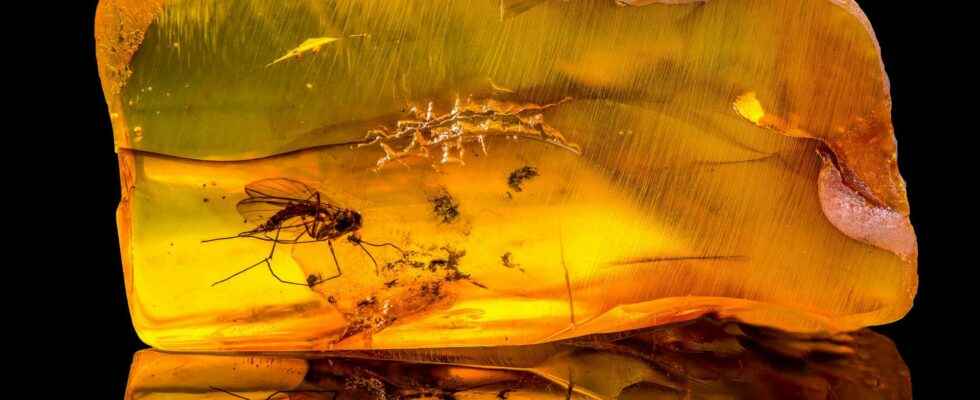A new species of wasp has been discovered trapped in fossilized amber, dating back to 30 million years ago. Found in the Dominican Republic, it is accompanied by an unknown flower and a fly larva.
You will also be interested
[EN VIDÉO] Interview: How are dinosaur fossils formed? Fossils are the only remains of dinosaurs to have survived to our time. It is from these remains that scientists can hope to understand these ancient animals. Futura-Sciences interviewed Éric Buffetaut, paleontologist, to find out more about their training.
This is an unexpected discovery: two new species discovered trapped in amber ! Found in the same fragment in the Dominican Republic, their age has been estimated at around 30 million years. The new flower has just been described in a study published in the journal Historical Biologywhile the wasp has already been described in a 2020 study in the journal Biosis: Biological Systems. The latter, named Hambletonia dominicana belongs to the encyrtid wasps, a group of wasps parasites known to attack a wide range ofinsectsand even to ticks !
The flower, on the other hand, belongs to the Euphorbiaceae family, which grows all over the world, but with a majority in the tropical regions of the American continent. “Fossil flowers of members of this family are quite raresaid George Poinar Jr., first author of both studies and a researcher at Oregon State University. I was only able to find one previously known fossil, from sedimentary deposits in Tennessee. »
Dominican amber is particularly transparent
Amber corresponds to fossilized resin, secreted by ancient conifers millions of years ago. The fragment found was in the mines of the northern Cordillera in the Dominican Republic, known to house some of the ancient resins oftree the most transparent in the world. The flower contained therein has been named Plukenetia minima, and corresponds to the very first flower of the genus Plukenetia found on the island of Hispaniola. Small in size and with a long stem, it is not in the company of the wasp and a fly larva by chance!
“In many cases, unrelated organisms are buried together in amber just by chance.said G. Poinar. But I have the impression that in this case the wasp was attracted to the flower, either to obtain nectar or to try to lay an egg on the capsule which contains the fly larva. The wasp egg would then hatch, enter the pod and devour the fly larva, allowing the wasp to survive in the ecological niche created by the vegetation and the flower heads of Plukenetia. »
Interested in what you just read?
